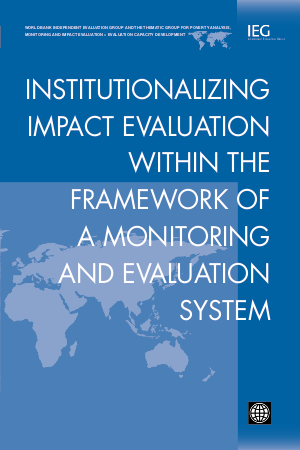
With the growing emphasis on the assessment of aid effectiveness and the need to measure the results of development interventions, it is no longer acceptable for governments, official development agencies, and nongovernmental organizations (NGOs) to simply report how much money has been invested or what outputs have been produced. Parliaments, finance ministries, funding agencies, and the general public are demanding to know how well development interventions achieved their intended objectives, how results compared with alternative uses of these scarce resources, and how effectively they contributed to broad development objectives such as the Millennium Development Goals and the eradication of poverty.
This booklet describes the progress being made in the transition from individual IE studies to building a systematic approach to identifying, implementing, and using evaluations at sector and national levels whereby IE is seen as an important budgetary planning, policy formulation, management, and accountability tool. The institutionalization of IE has been achieved in a relatively small number of developing countries, mainly in Latin America, but many countries have already started or expressed interest in the process of institutionalization. This paper reviews this experience in order to draw lessons on the benefits of an institutionalized approach to IE, the conditions that favor it, the challenges limiting progress, and some of the important steps in the process of developing such an approach.